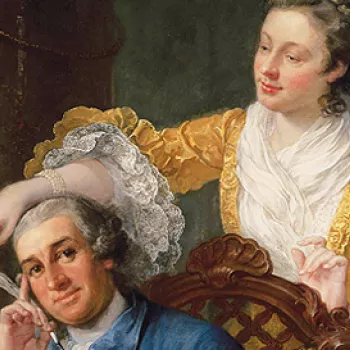Set of sauce ladles 1743-45
Silver gilt | 19.9 x 5.9 cm (whole object) | RCIN 51259
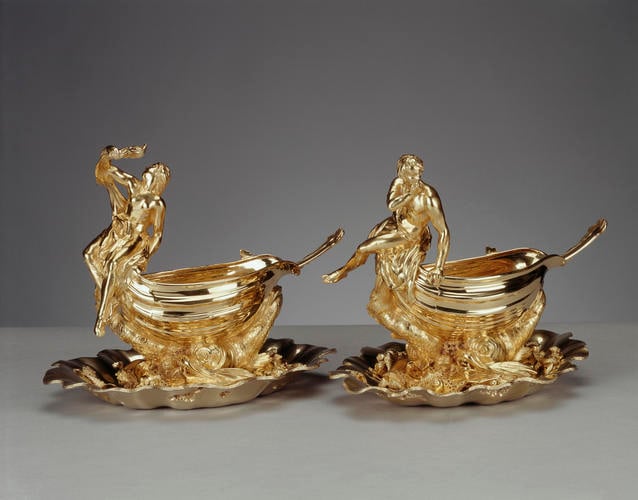
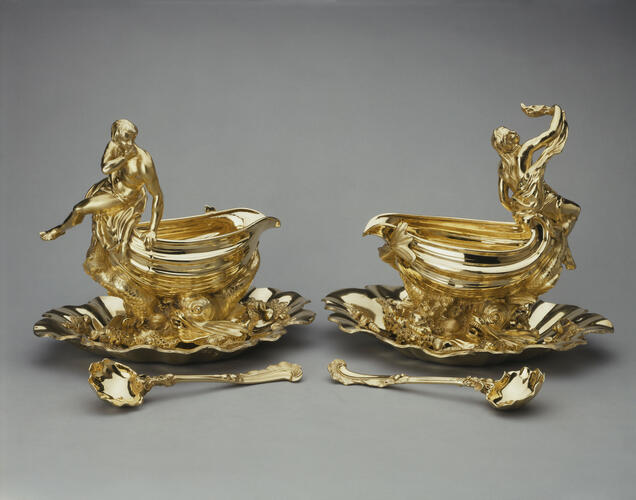
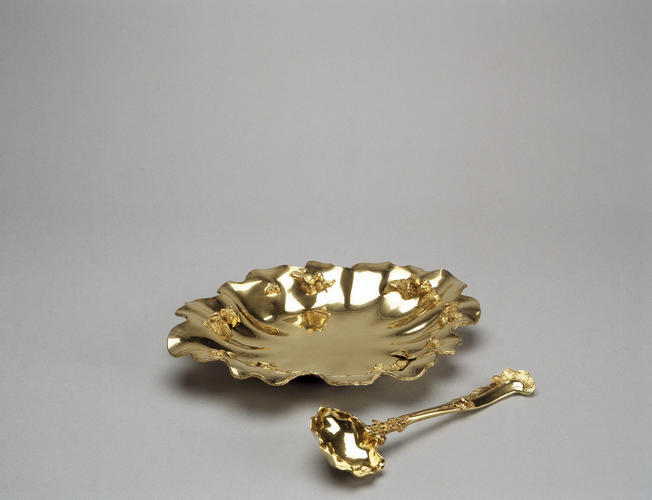
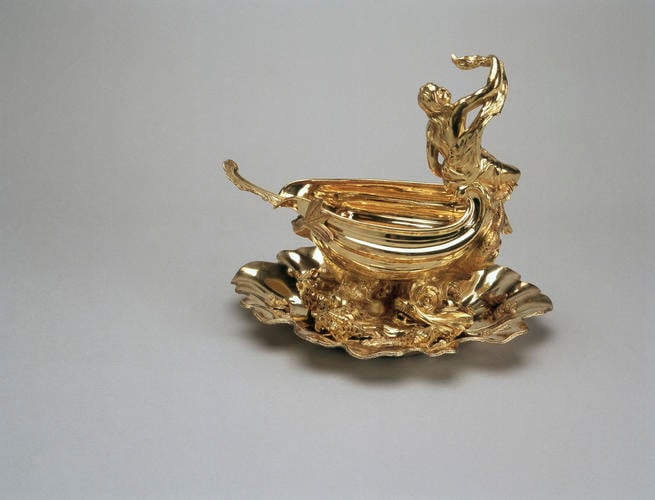
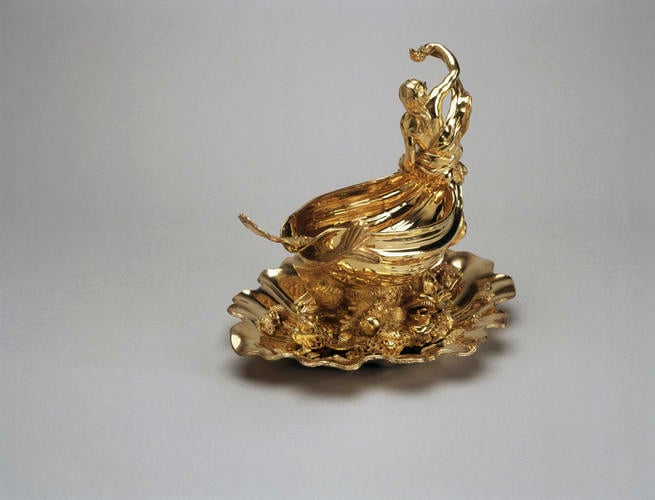
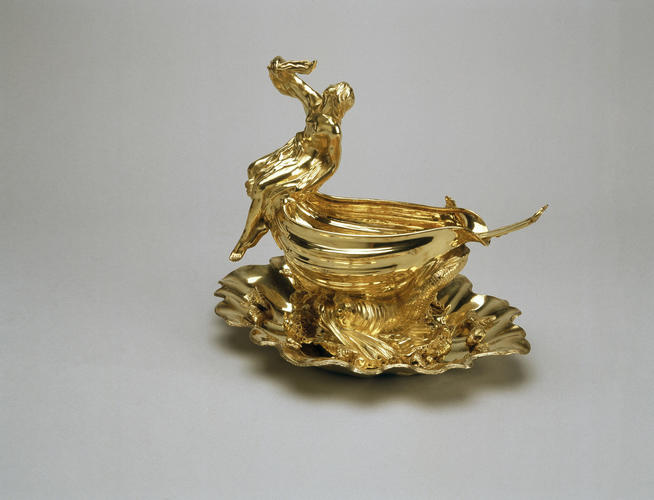
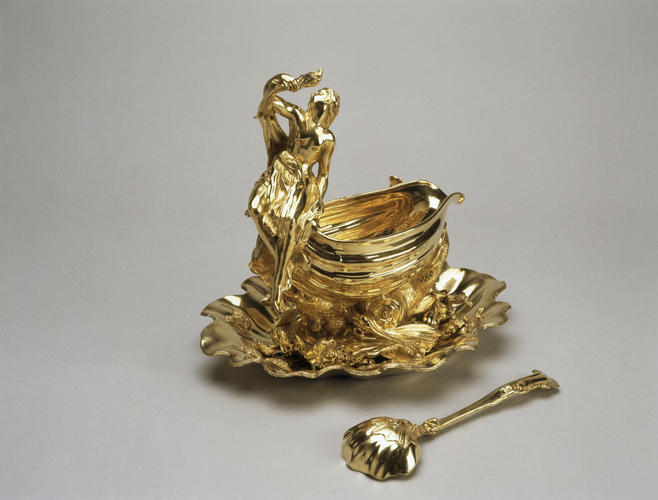
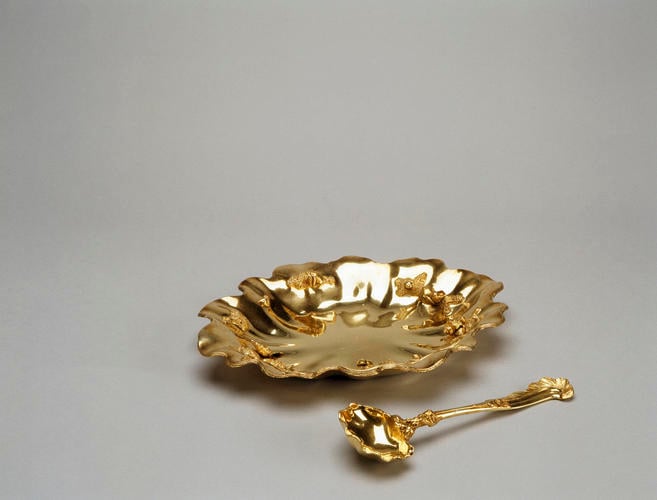
-
A set of four silver-gilt rococo sauce ladles, each with a scalloped bowl, and asymmetrical handle cast with coral and shells, with a rocaille terminal.
Despite Voltaire’s rather acerbic comment that England had forty-two religions but only two sauces, the royal bills of fare for this period reveal a more varied picture. Gravy was certainly made every day – the quantities of beef, mutton and veal required being recorded alongside the daily menus. Among the delicacies served to the royal family were sauces made from egg, bread, celery, parsley, orange, apple, cucumber, horseradish, mustard, mint, cherry and cardoons, as well as savoury sauce, Dutch sauce (Hollandaise), sauce douce and sauce blanc, which are also listed. The 1721 inventory of royal plate describes only a single gilt ‘sawce boat’ in the Jewel Office at Whitehall together with four silver versions which formed part of an ‘aparn’ (epergne or centrepiece). But by the 1730s and 40s they were supplied to the Jewel Office in increasing numbers.
Sprimont’s design for these ladles and their sauceboats relates closely to the Neptune centrepiece – particularly the rococo dolphins which form the bases, each with a ripple of water forming whisker-like spray around its mouth. These in particular support the theory that Sprimont was involved in the creation of the centrepiece (RCIN 50282). It may be that Sprimont and Crespin were simply employing the same modeller to complete the service for the Prince of Wales. Roubiliac has been suggested as the most obvious candidate. Sprimont stood as godfather to Roubiliac’s daughter Sophie in 1744. However, Sprimont seems to have been involved in both the designing and modelling processes to an unusual degree, and one theory is that Sprimont may have earned his money by working as a modeller for fellow Huguenot craftsmen in London while waiting for his official hallmark from Goldsmiths’ Hall.
The importance of decking a table in a symmetrical pattern meant that sauceboats were usually, at this date, supplied in pairs – in this case two with perching sea-nymphs and two with youths, each forming an almost helical handle. The figures owe a debt to baroque fountain sculpture, and Sprimont may have been calling on the architecture of his native Liège as inspiration. The sauce ladles relate to an undated drawing, attributed to Sprimont, depicting a salt with marine elements, including dolphins, shells and pieces of coral, which shows two alternative designs for spoons, with shell bowls and coral stems.
Text adapted from The First Georgians: Art and Monarchy 1714 - 1760, London, 2014Provenance
Almost certainly made for Frederick, Prince of Wales between 1743-5, to accompany the sauceboats (RCIN 51271).
-
Creator(s)
(goldsmith)Acquirer(s)
-
Medium and techniques
Silver gilt
Measurements
19.9 x 5.9 cm (whole object)





